When you first start your journey into the orchid world, the names and many types of orchids become rapidly overwhelming. Orchid identification isn’t hard to understand, and once you do, you’ll find it a lot easier to distinguish the basic growth patterns and can provide better orchid care for each species.
In this article you’ll learn:
- How knowing what each genus is will help you
- How to identify each orchid (the 5 most common ones)
- How to correctly know a genus and species
- What the different ID tags on orchids mean
- When to capitalize, italicize, use an x, and parenthesis
In this article you won’t learn:
- How to care for each orchid.
Care guides would require four to six pages of written instructions for each genus and this article would soon become way too large. For more specific instructions, search the basic care instructions, like this guide to Cattleyas.
Why learn the what genus and species an orchid is? What benefit can you get from that? When you learn to identify the most common orchids and how they are different from each other, your understanding of how to care for them will drastically change.
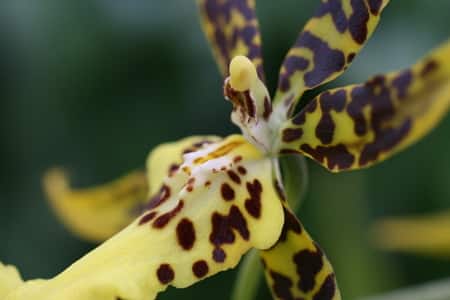

The benefit of proper orchid care is not only for your orchid: your wallet will thank you too. Many times, greenhouses and floral shops will have non-flowering plants with no ID tags on them for a substantive monetary discount—quite a big sale.
Since these orchids are not in blossom, they’re harder to sell. If they don’t sell, the nurseries will have to provide another year’s care for them, which means less profit for the greenhouse. If you can identify the plant without the flower in blossom, you’ll save a bundle of money and be able to care for your orchid better.
When orchids are in full bloom, they have used up most their energy. Any new environment change that will cost them energy is detrimental to their health.
Let’s take a look at the most commonly sold orchids:
Phalaenopsis,
Cattleya,
Dendrobiums,
Oncidiums,
and Paphiopedilums,
because they will be the ones with out the proper ID tag. Sometimes, the name of the grower is replaced form the genus of the orchid, so most new orchid hobbyist won’t know which orchid they have.
In this video, I talk about the 5 most common orchids for beginners.
Phalaenopsis—the Moth Orchid
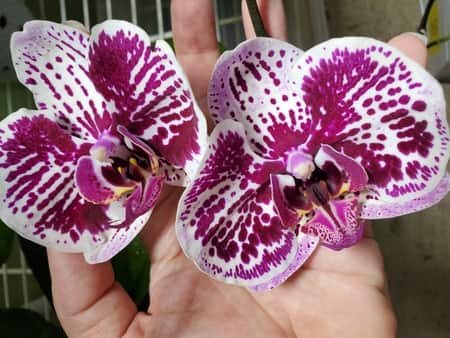
The most common orchids are phalaenopsis (fail-eh-NOP-sis). These are commercially grown in mass production because they are easy to grow indoors and because their flower blossom will last for up to three months (if adequate care is provided.) This is usually the “starter orchid” for many of us, because they’re so often given as gifts. The main plants you can confuse a phalaenopsis with, when they don’t have flowers, are paphiopedilums and dendrobiums.
Image Credit: Orchideria 2020. All Rights Reserved
Phalaenopsis: Proper Name and Identification
The name was derived from the Greek work phalain, which means “moth” and opsis, which means “appearance.”
These orchids resemble large white moths that appeared in the tropical jungles.
Phalaenopsis orchids can be written in an abbreviated form: Phal.
In nature, they are found in Malaysia, Indochina, Philippines, Australia, Borneo, New Guinea, and the islands in Southeast Asia.
Phalaenopsis: Leaves
To identify a phalaenopsis, look at the leaves. These broad, thicker leaves grow 6 or 8 for each adult plant. When you buy them at a flower center, they’re probably newer, having only four leaves. There’s a common wive’s tale, fable, myth, whatever you want to call it, that says they’ll have one leave for every 10% of humidity you provide. In my home office, I can get to 55% humidity, and most my phals have 5 to 6 leaves.
Leaves grow on a central stem, opposite each other, one on each side. This is important to note, because it’s a way to distinguish a phalaenopsis from a dendrobium, which grows several thinner leaves.
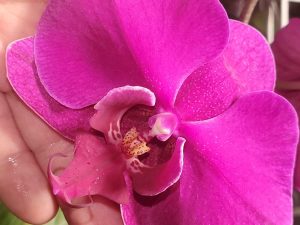
Phalaenopsis: Flowers
The flower spike will emerge from the central stem, and each plant usually only has one, at the most two, flower spikes.
In the picture, there are 7 miniature Phalaenopsis on an orchid mounted side by side.
Phalaenopsis: Roots
Phalaenopsis produce many aerial roots, but dendrobiums don’t have any. Aerial roots are perfectly normal for phalaenopsis and should not be buried when you repot.
ID TIP: When you purchase an orchid, it will have two names, the genus (genera for plural) and species. Genus is the broader group, while species is the particular variations inside that group.
If it were compared to geography and people groups, the first name would be “North Americans”, and the second name would be “Canadians, Americans, Mexicans”. North American canadian.
Another example would be the genus compared to “Europeans”, and the species, “German, French, Spanish, English…”. The genus is always the broad division and the species the smaller, grouping several different orchids in it. European german.
The first letter of the genus is always capitalized; the first letter of the species isn’t. Both names are in italics.
In our example of the genus Phalaenopsis, to distinguish the 66 types of species, you’d write the genus “Phalaenopsis” first, and the species “Aphrodite” second:
Phalaenopsis aphrodite.
If you already have the orchid’s name but want to research the genealogy of that plant, you can search through Royal Horticulture Society (RHS). Their job is to keep the plant names (not only orchids but all plants) cataloged and specific information on how each plant was registered. If you stop to think that there are over 150,000 hybrids now known just in the orchid family, imagine how much information is on their database.
Their job is to keep the plant names (not only orchids but all plants) cataloged and specific information on how each plant was registered. If you stop to think that there are over 150,000 hybrids now known just in the orchid family, imagine how much information is on their database.
Cattleyas

Cattleyas (CAT-lee-ahs), or Cat for short, have wonderfully fragrant flowers in comparison to the Phals described above, which don’t have a distinct fragrance. Cat’s flowers are larger, taking around three to four days to fully bloom. Once in bloom, they’ll last up to a month. If special care is used, like moving them to a cooler place, the blooms may stay open for a bit longer, 6-7 weeks.
Cattleyas were originally the queen of the orchids, often being used in making corsages and flowers for special occasions. The cut flowers lasted a long time and handles floral designs well.
Since then, cattleyas have lost their ranking to phalaenopsis, mainly because of how long phals can remain in bloom.
Cattleya Roots & Pseudobulbs:
To identify a Cattleya you’ll focus on the bottom part of the flower stem. Instead of one central stem, there will be five or six stems, each having a few leaves at the very top (or end) and each one is capable of producing flowers.
This is possible because Cats are sympodial orchids, in contrast to monopodial Phalaenopsis orchids. Sympodial means several pods, and translates well into “no central stem”.
It grows because it has a rhizome hidden on the potting medium—roots and pseudobulbs will surge from there. As to the pseudobulbs, which aren’t as noticeable as other sympodials, find the bottom part of the stem and it should be thicker and be covered in a wheat-textured sheath. This is a protective covering that keeps the pseudobulb safe. Since these are longer and not as thick as most pseudobulbs, they are often called “canes.”
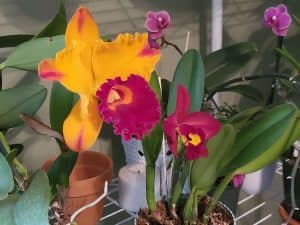
All Rights Reserved
Cattleya Leaves and Flowers
Each pseudobulb will have either one or two leaves on it—hardly ever more. One leaf is called a unifoliate; two leaves are bifoliate. Reading about them like this, in a hands-off guide, they might seem “leafless”, but remember there are several pseudobulbs, each having a leaf or two. This is where they can really sprout outward and fill a pot quick, instead of growing up towards the sky, like a Phal.
Cattleyas will produce one flower on the top of each cane.
Dendrobiums
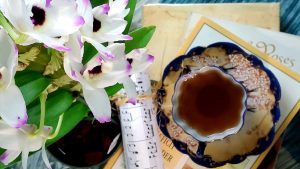
All Rights Reserved
In this article, the focus will be on Dendrobium nobile and the Dendrobium phalaenopsis, which are the two most commonly commercialized Dendrobiums (den-DROH-bee-um). But there are so many different species of Dendrobiums, around 1,200 to be more specific, that you’ll need to do further research to better identify your orchid and provide specific care.
Some of the more common names for Dendrobiums are: Dendrobium orchid, Cooktown orchid, and Mauve butterfly orchid.
Den for short, they are mostly found in Southeast Asia and Australia.
Dendrobium Roots, Rhizomes & Pseudobulbs
Dendrobiums have longer slender pseudobulbs, which for a new orchid growers, might not look any different than the stem. Since they’re sympodials, they’ll have several canes (slender pseudobulbs) in the pot, and not just one main stem. In my opinion, without flowers, these are the ugliest plant stems ever. All other orchids have at least a good-looking leaf status without flowers. But not dendrobiums… (My opinion only)
Dendrobium Leaves
Remember that the phalaenopsis orchid had one leaf on each side of the stem? And Cattleyas had one or two leaves at the top of the canes? Well, dendrobiums mix these two characteristics and produce leaves that are opposite each other but along the entire length of the cane.
The Dendrobium phalaenopsis has thicker leaves which don’t like to be handled. If you try to bend them, they might break off. Other dendrobiums, like the Nobile, have longer slender leaves, which can be handled well. In all cases, the leaves on Den. will be longer in length than they are wide.
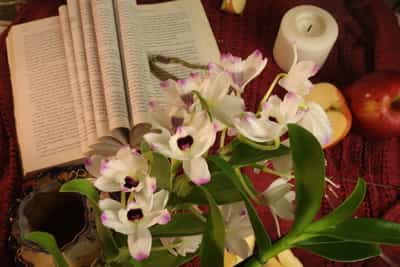
Since dendrobiums do have an extra-long dormancy period, some of the Den. species will lose all their leaves. This makes them even more unattractive, and they look-like they’re moving on to the great greenhouse in the clouds. But don’t toss them in the trash; they will come out of their dormant period.
Dendroboium Flowers
The flower spikes are not good ways to identify Den, because depending on the species, they can sprout from about anywhere. Spikes can be produced either in the middle of the cane or on the sides of the canes.Dendrobium phalaenopsis will have flower spikes from the middle, but the Dendrobiums nobile will have flowers along the sides of the cane.
Dendroboium Roots and Soil
Dendrobiums can produce aerial roots, just like phals. So these don’t help differentiate the plant. Since the genus is so large, not all Den. are epiphytes. Some are terrestrial and will grow in soil.
Note: Since dendrobiums are a little more complex in terms of growing habits, as a new orchid hobbyist, I advise you to not buy it. Experiment with other genus until you understand how to properly grow without over-watering, fertilizing, and providing adequate sun.
Smile at the vendor with those smiles of whose been caught red-handed and slowly place the unidentified Dendrobium back on the orchid shelf. Nod politely and move on to the next orchid, hopefully a Phal. Once you’ve got a stable hand at orchid growing, buy a Dendrobium.
ID TIP:
The name of the person who documented the orchid or discovered it is sometimes included in the orchid name as a way to honor these explorers and botanist. This is the example of Dendrobium albosanguineum Lindl. & Paxton. In 1852, this orchid was cataloged, including the names of Lindley and Paxton, who contributed to its discovery and documentation. The first part is who named the orchid, and the second is who wrote about it in orchid taxonomy and classification articles.
This type of identification is commonly used when there’s confusion from synonyms. Sometimes the same name is used to describe two totally different orchids. Since they were probably registered at different times or different parts of the world, these names may cause confusion.
Having trouble with an orchid name? You can check orchid nomenclature to learn more about the year it was documented if there are any synonyms, where it is naturally found in the world, and other more technical information. This website is not an orchid care guide, but more like a genealogy guide.
to learn more about the year it was documented if there are any synonyms, where it is naturally found in the world, and other more technical information. This website is not an orchid care guide, but more like a genealogy guide.
Oncidium
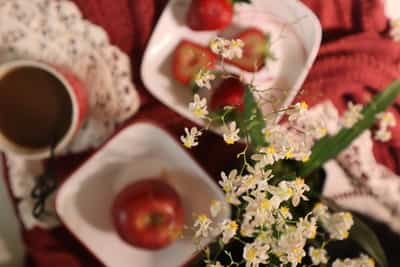
Oncidium (on-SID-ee-um) orchids have many pendant flowers, usually yellow with brown overtones, which cascade downward. I say “usually” because this genus has over 700 species. The cascade can grow up to 6 feet (1.8 meters) long.
Golden rain is what they’re called in Portuguese, “chuva de ouro”. I mention this because their natural habitat is in South America, mainly in Brazil but can also be found in Peru, Ecuador, Mexico, and Colombia.
Although they resemble golden raindrops or dancing ladies, with a southern-belle-type dress, their names comes from onkos, which means swelling or tumor. But this swelling is good, because it refers to the bottom part of the “dress”, lip, or labellum, which an enlarged lower “petal”.
Oncidiums, or Onc for short, create this larger labellum as a landing platform for insects to stand on during pollination.Hint: If you know a cancer survivor, this is the perfect gift. Onkos is also where we get the word oncology. The name is closely related and you can explain how something so terribly devastating can have beauty in it: the process of fighting, finding hope, strengthening your identity, and all the positive side of overcoming a serious, life-threatening illness. This is a winner’s orchid!
On a more personal note: this was one of my mother’s favorite (and only) orchid. She passed away from cancer in 2014. This orchid has a special meaning to me and was one of the reasons I decided to grow orchids once I returned to the United States. But that’s a while different story, which you can check out on the about page.
Anyway, oncidiums can be recognized by the circular shaped pseudobulb. These pseudobulbs are wrinkly, almost old-like. Don’t worry, this is normal.
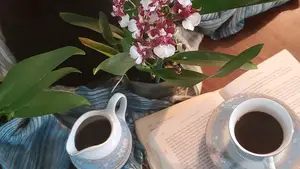
Oncidium Leaves
Oncidiums will have about one to four leaves for each pseudobulb. One of these leaves will start out just like the others, but soon turn into a flower spike. Each pseudobulb can have several of these flowering spikes, all emerging from the base of the pseudobulb.
This picture is of a very common oncidium, an Oncidium Sharry Baby, and has a distinguished fragrance of chocolate.
Oncidiums Other Identifying Markers:
The round pseudobulb is the main way to identify these orchids, because they are so easily pollinated by thousands of other genera, Oncidiums have a big number of hybrids. In the past, Oncidiums grouped other genera
Cochlioda,
Miltonia,
Cuitlauzina,
Miltoniopsis,
Osmoglossum,
Leochilus,
Comparettia,
Cyrtochilum,
Odontoglossum,
Tolumnia,
Rhynchostele,
Psychopsis
into one big messy pile of greenery. Today these genera have separated into their own distinguished categories.
Paphiopedilums
The commonly known lady slipper orchid, which is found in wetlands of North America, is a terrestrial orchid. When it’s in bloom, it has what the native Indians called a woman’s moccasin, later translated with westernized English into Lady Slippers.

This orchid when it doesn’t have a flower spike can be commonly confused with a phalaenopsis. The main difference is that there is no central stem on a paphiopedilum, (paff-ee-oh-PED-ih-lum) like a phal does, and the leaves are quite different. The leaves will sprout from the roots, keeping them very short and close to the ground. Phaps are sympodial orchids, but they don’t have pseudobulbs. Their rhizome is very tiny, as compared to cattleyas.
Another way to differentiate the paphiopedilums is that there are no aerial roots, like phals have. Talking about roots, paphiopedilums are not epiphytes, which means they don’t grow in trees. These terrestrial orchids grown in soil. If you’re still not sure what orchid it is, take a glance at the potting medium.
Bark: phalaenopsis
Soil: paphiopedilums
Paphiopedilum Flowers
Paphs will grow one flower at a time, and the stem originates from the very middle. Phalaenopsis orchid will produce flower spikes from the sides of the stem in the middle of two leaves, and not in the very center. If you see a flower spike, verify where it is growing from: center or side.

ID TIP:
Some orchids found in the wild are naturally pollinated, creating a hybrid. When these flowers are not man-made, but random interventions by mother nature, the two genera names are used in italics, separated by an X, which is not italicized.
Let’s say that a Phalaenopsis orchid was pollinated by a bee which had pollinia from a Cattleya on it. The new orchid that would bloom would be called Phalaenopsis x cattleya.
(I might add that this is a cross that doesn’t work in nature since these two genera are not genetically compatible, and in spite of all the testing, they just don’t produce any seeds or flowers. I just used this example because they’re the first two orchids I’m writing about.)
You can have successful results though with the following hybrids, and these are just a few examples:
Sedirea x Phalaenopsis
Cattleya x hardyana
Oncidium x Odontoglossum
Dracula x Masdevallia
Another common way to write these hybrid names out is to write the genus of the plant and in parenthesis, the names of the two parent plants. Remember, this naming classification is good only for plants that are naturally form in nature, not the man-made hybrids. Again, everything except the X is in italics and the first letter of the genus is capitalized.
Cattleya (dowiana var. aurea x warscewiczii)
If you have an orchid with an ID tag, but the identification is listed with an abbreviation, you can check out this abreviation sheet in pdf made by RHS, which has a complete list of all the abbreviations used for orchids. This list is mainly used for judging and competition orchids, but it will be a good place to go to find out what each genus is in the “long form”. This pdf of 15 pages opens up in a new browser.
which has a complete list of all the abbreviations used for orchids. This list is mainly used for judging and competition orchids, but it will be a good place to go to find out what each genus is in the “long form”. This pdf of 15 pages opens up in a new browser.
ID TIP:
Some orchids have the first name in italics and the second in normal script, for example, the Oncidium rutkisii Foldats. This means that the botanist who crossbred these hybrids are recognized. These are not found in nature, but manipulated by humans to get either a bigger flower, better scent, longer blooms, etc.
ID TIP:
The final part in identifying a name tag is the quotation marks or all capital letters at the end of the name. (There’s much more to the name tag ID’s, but I say final because this is enough information to get you started in knowing how to read orchid identification tags.)
The quotation marks around the final name is how the orchid is commonly known name. An example of this is Dendrobium Red Emperor ‘Prince’. It’s easy to recognize because that is what most people call the orchid.
The all capital letters represent the greenhouses or cultivators that widely distribute these orchids. Some of these growers are so larger, that their commercially-known name is referenced to the orchid: Phalaenopsis MINI DEER.If you want some more visual cues as to what orchid you have, head over to my Pinterest Page, where I have thousands of pictures of orchids, each in a specific category separate by genus. Even though the picture focus more on the flowers than the written descriptions above, they will give you a good idea of what orchids are in each genus.
where I have thousands of pictures of orchids, each in a specific category separate by genus. Even though the picture focus more on the flowers than the written descriptions above, they will give you a good idea of what orchids are in each genus.
Another idea is that if you have a flower and know the genus, but are looking for more specific names, use the google search image resource.
While we’re talking about nomenclature, make sure you don’t lose the name-tag during repotting. This is more common than not, because we tend to throw away all the potting medium and soon the tag is in the trash before we realize it. Keep the tag in a safe place before you repot and place it back into the pot after repotting.
Happy Cultivating!


Do you look at photos to help ID? I have an oddball that I’ve been trying to identify for a long time. I think it’s a Dendroboium, but the flowers are barely an inch wide, and the pre-blooms look like little half moons. The flower is pink/white/speckled purple. The blooms have a very strong fragrance! I think it’s a terrestrial … any help to offer? Thank you!
I am trying to identify an orchid. It has long, bare branches about 4 feet long with lobed green leaves at the end. The flowers are about 6 inches long and look like pale orange strands around a white center of fluffy strands. Any thoughts?